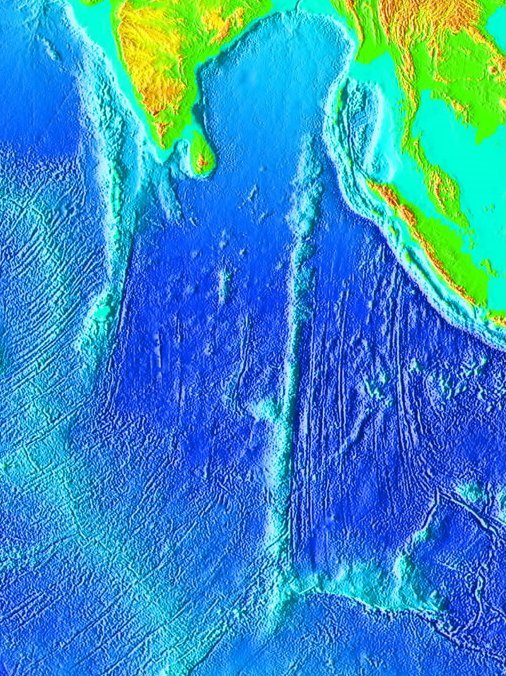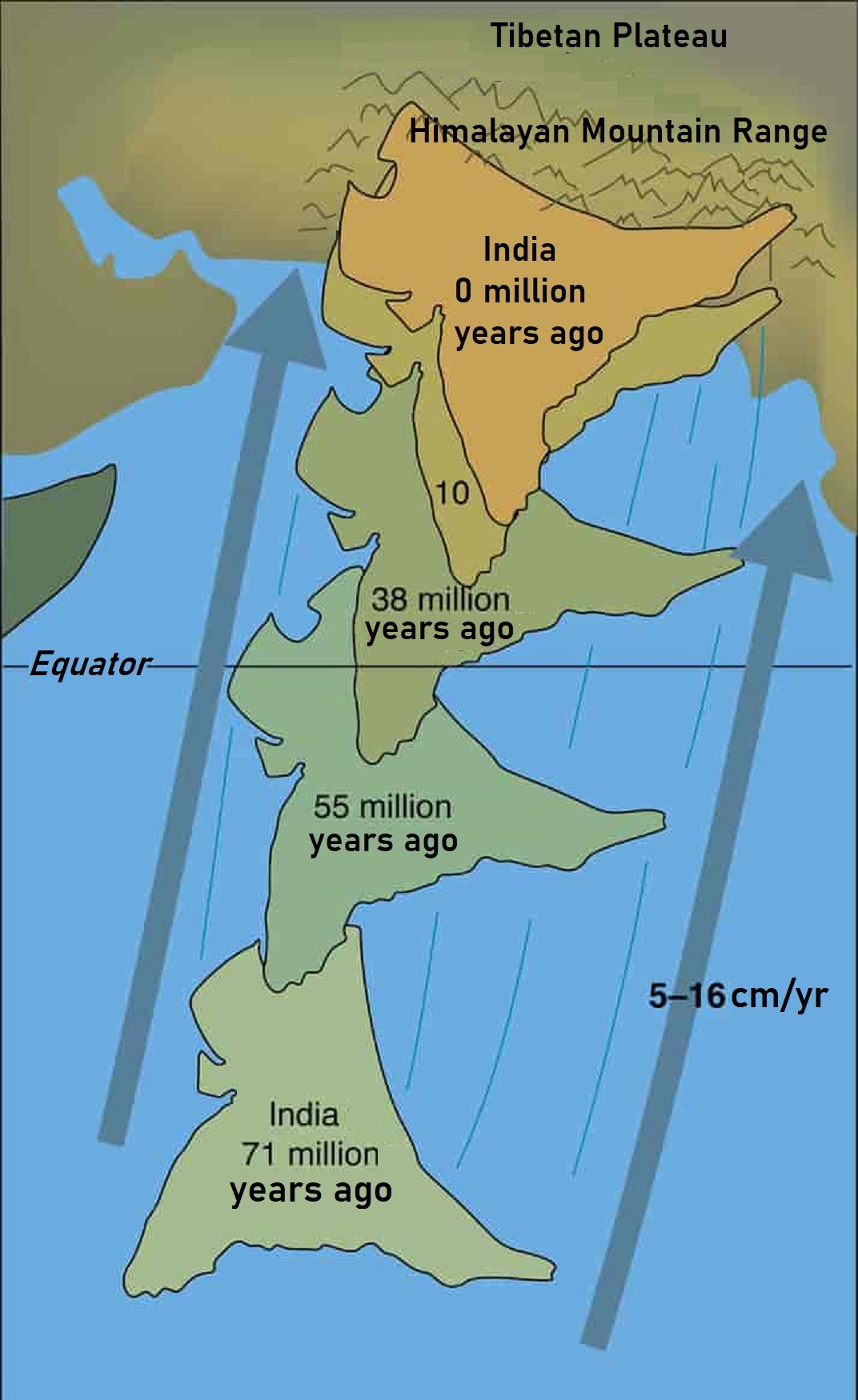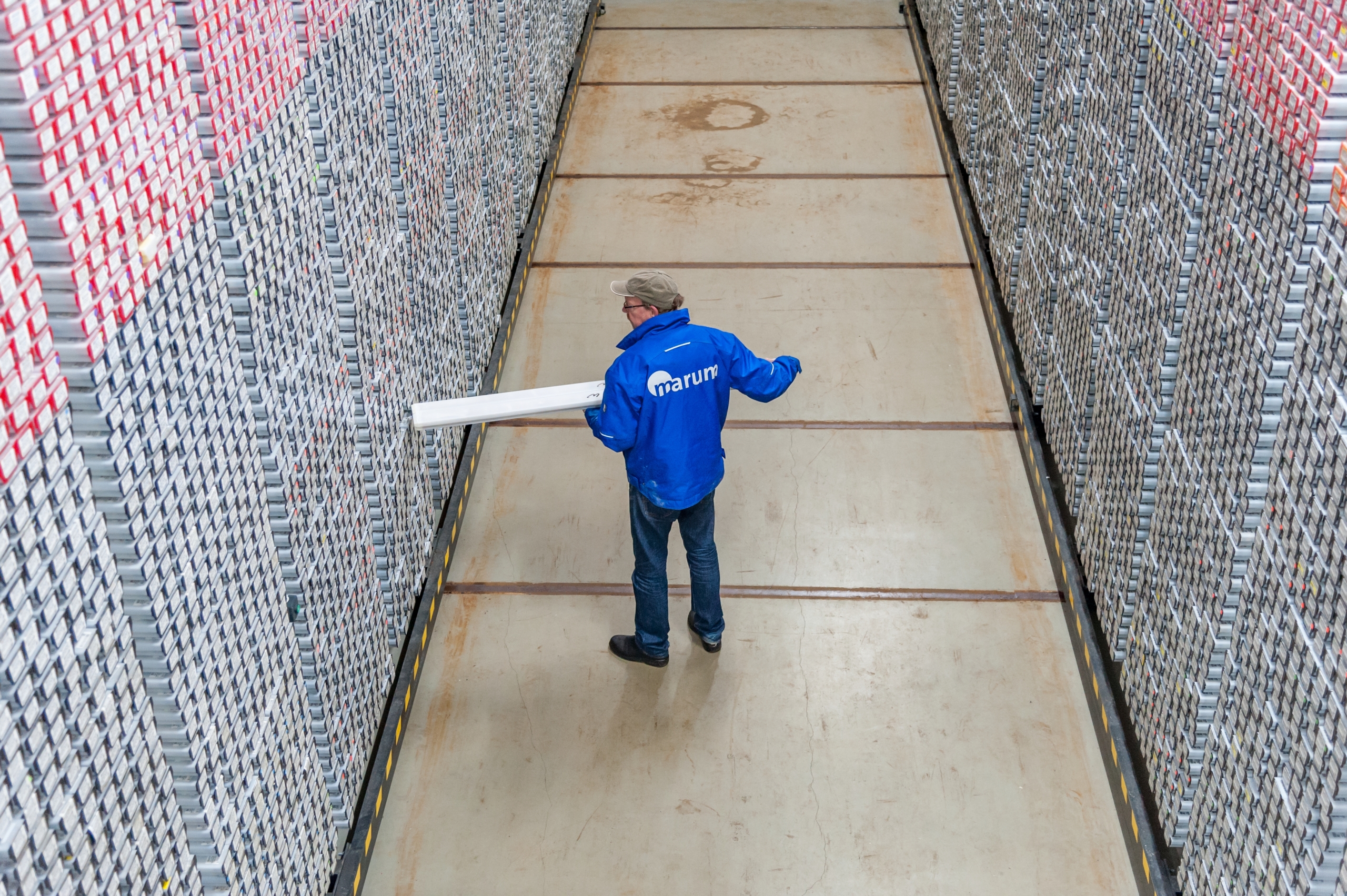
Credit: Tonicthebrown, public domain, via Wikimedia Commons
Background
Synopsis: Analysis of an underwater mountain ridge in the Indian Ocean suggests that a geological hotspot is not stationary as previously thought. Although more data needs to be collected and analyzed to confirm this finding, the study is providing new insights into Earth’s tectonic processes.
- Hotspots are regions of intense volcanic activity caused by plumes of hot, buoyant material rising from deep within Earth’s mantle.
- Unlike volcanoes that typically form at plate boundaries (where tectonic plates collide or pull apart), hotspot volcanoes can appear in the middle of tectonic plates.
- The classic example is the Hawaiian Islands, which formed as the Pacific plate moved over a stationary hotspot.
- Traditionally, geologists believed that hotspots remained fixed in place while tectonic plates moved over them, creating island chains.&
- However, not all hotspots behave in the same way—some, like the Ninety-East Ridge’s Kerguelen hotspot, appear to have migrated, leading scientists to reevaluate their understanding of mantle plumes.
- Deep beneath the Indian Ocean lies a remarkable geological feature—the Ninety-East Ridge.
- This massive underwater mountain range stretches nearly 3,100 mi (5,000 km) from north to south, roughly following the 90° East longitude.
- Scientists have long suspected that the ridge formed due to volcanic activity, but the exact process remained uncertain.
- New research has provided critical insights into how hotspots—regions where molten rock rises from deep within the Earth—can move over time, reshaping our understanding of plate tectonics and Earth’s interior dynamics.

The traditional view of hotspots is displayed by the motion of the Pacific plate over the top of the stationary Hawaiian hotspot. As the Pacific plate moves, older volcanic islands are located to the northwest while younger islands are located in the southeast.
Credit: Joel E. Robinson, USGS, public domain, via Wikimedia Commons
- The Ninety-East Ridge challenged the idea of stationary hotspots because its formation suggested that the underlying magma source had also shifted over time.
- The ridge was formed by a now-extinct volcanic hotspot known as the Kerguelen hotspot, which differs from the Hawaiian model by interacting more dynamically with mantle convection currents.
- Recent research has confirmed that this hotspot itself moved—possibly by hundreds of kilometers—while the Indian plate was also shifting above it.
- This discovery adds complexity to the traditional understanding of how Earth’s interior behaves.
- Mantle Dynamics
- The mantle, the layer of rock between Earth’s crust and core, behaves like a slow-moving fluid over geological timescales.
- Scientists now believe that large-scale mantle convection (slow churning motions caused by heat from Earth’s core) can shift hotspots.
- Magma from deep plumes doesn’t always rise directly to the surface; it can pool beneath the lithosphere, much like currents in a lava lamp, accumulating in regions where the crust is slightly thinner or where stress fractures allow easier movement.
- As tectonic plates shift, these magma reservoirs may be stretched, compressed or redirected, influencing the location of volcanic activity.
- Instead of being fixed, a hotspot’s magma source may be deflected or dragged by these convection currents, altering its apparent position over time.
- Plate Motion and Interaction
- The Indian plate moved rapidly northward after breaking away from the ancient supercontinent Gondwana about 120 million years ago.
- The motion of the plate varied over time, moving at rates between 2–6 in (5–15 cm) per year.
- As the plate moved, interactions between the deep mantle and the lithosphere (Earth’s rigid outer shell) may have influenced the movement of the hotspot itself.

The Indian plate moved toward the Eurasian plate at variable rates over the last 71 million years.
Credit: Haakon Fossen, CC BY 3.0, via Wikimedia Commons
- Evidence from Seismic Studies and Rock Samples
- Scientists analyzed volcanic rocks along the Ninety-East Ridge and used radiometric dating to determine their ages, which range from roughly 45 million years ago at the southern end to 83 million years ago at the northern end.
- This data showed that the volcanic chain didn’t move at a constant speed but instead varied over millions of years. Influenced by the mantle dynamics and plate motion (the Indian plate slowed as it approached the Eurasian plate), the movement of the hotspot varied from 0.04–1.6 in (1–40 mm) per year throughout the formation of the Ninety-East Ridge.
- This age progression suggests that both the hotspot and the Indian plate moved over time, creating a long volcanic chain.
- Seismic tomography, a technique like a CT scan but for Earth’s interior, revealed anomalies in the mantle indicated past movements of the magma plume.
- Geochemical analysis of the rocks showed variations in isotopic composition, further confirming changes in magma sources and flow patterns over time.

A majority of the core samples collected from oceans across the globe are stored in a repository at the University of Bremen, Center for Marine Environmental Science in Germany.
Credit: MARUM – Zentrum für Marine Umweltwissenschaften, CC BY 4.0, via Wikimedia Commons
- The idea of fixed hotspots is now being reconsidered, with evidence showing that deep mantle processes can shift them over millions of years.
- Other known hotspots, like those beneath Iceland and Yellowstone, may also have histories of movement.
- The discovery of moving hotspots changes how we interpret past plate movements and volcanic activity worldwide. It may help explain unusual volcanic chains and mountain ridges on other ocean floors.
- Understanding how magma pools beneath the lithosphere and is influenced by mantle currents can help refine predictions about seismic and volcanic activity.
- The shifting of hotspots may also play a role in how heat from Earth’s interior escapes to the surface over geologic time.
- The realization that the hotspots can move significantly deepens our knowledge of Earth’s internal processes. It challenges long-held assumptions in geology and opens new avenues for studying how mantle plumes interact with tectonic plates.
- The Indian Ocean’s Ninety-East Ridge tells a fascinating story of shifting forces deep beneath the Earth. As we gather more data and evidence, we continue to refine and update our theories about how the Earth works, demonstrating that scientific understanding is always evolving.
Episode script
Volcanoes often form where tectonic plates collide or pull apart. But sometimes they’ll form in the middle of plates, due to geologic hotspots.
A hotspot is a plume of hot mantle that rises from within Earth, and heats, expands and deforms the crust above it, to create mountains, volcanoes or volcanic islands.
The classic example is the chain of Hawaiian Islands, which formed as the Pacific plate traveled across a hotspot.
Scientists always thought hotspots were stationary, while tectonic plates moved over them. But new research from beneath the Indian Ocean has challenged that idea.
There, an undersea mountain range runs north-south for 3000 miles, along the 90-degree East longitudinal line.
This long ridge was formed by a hotspot—but scientists studying the age and geologic makeup of each mountain on the chain realized they grew faster than could be possible by the plate alone moving.
The hotspot must also have moved, possibly by hundreds of miles.
This simple discovery will cause us to rethink hotspots and volcano formation, all over the world.
It may turn out that other well-studied hotspots, like those beneath Iceland and Yellowstone, are moving too. Which could help us better understand the geothermal and volcanic activity there.
And that’s how science works. It’s always on the move—sort of like hotspots.

